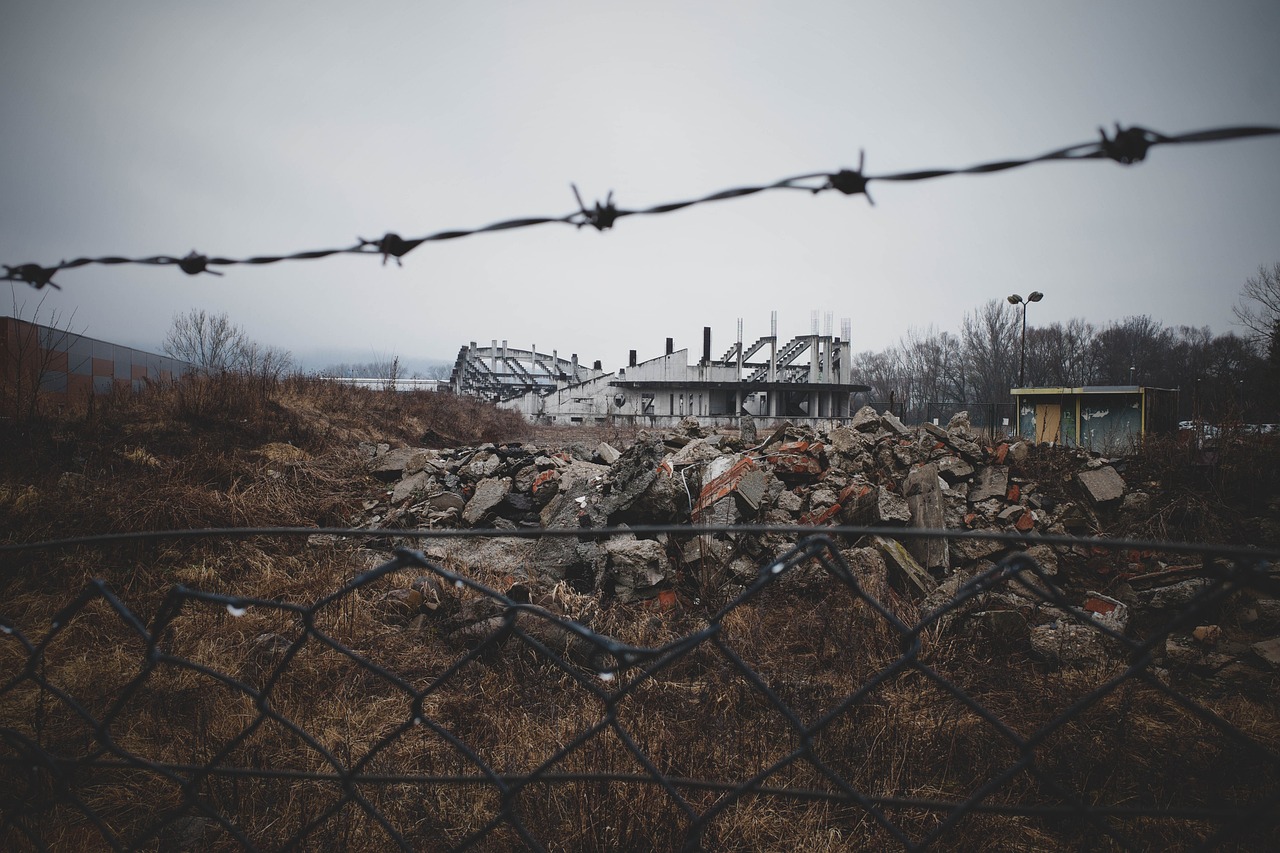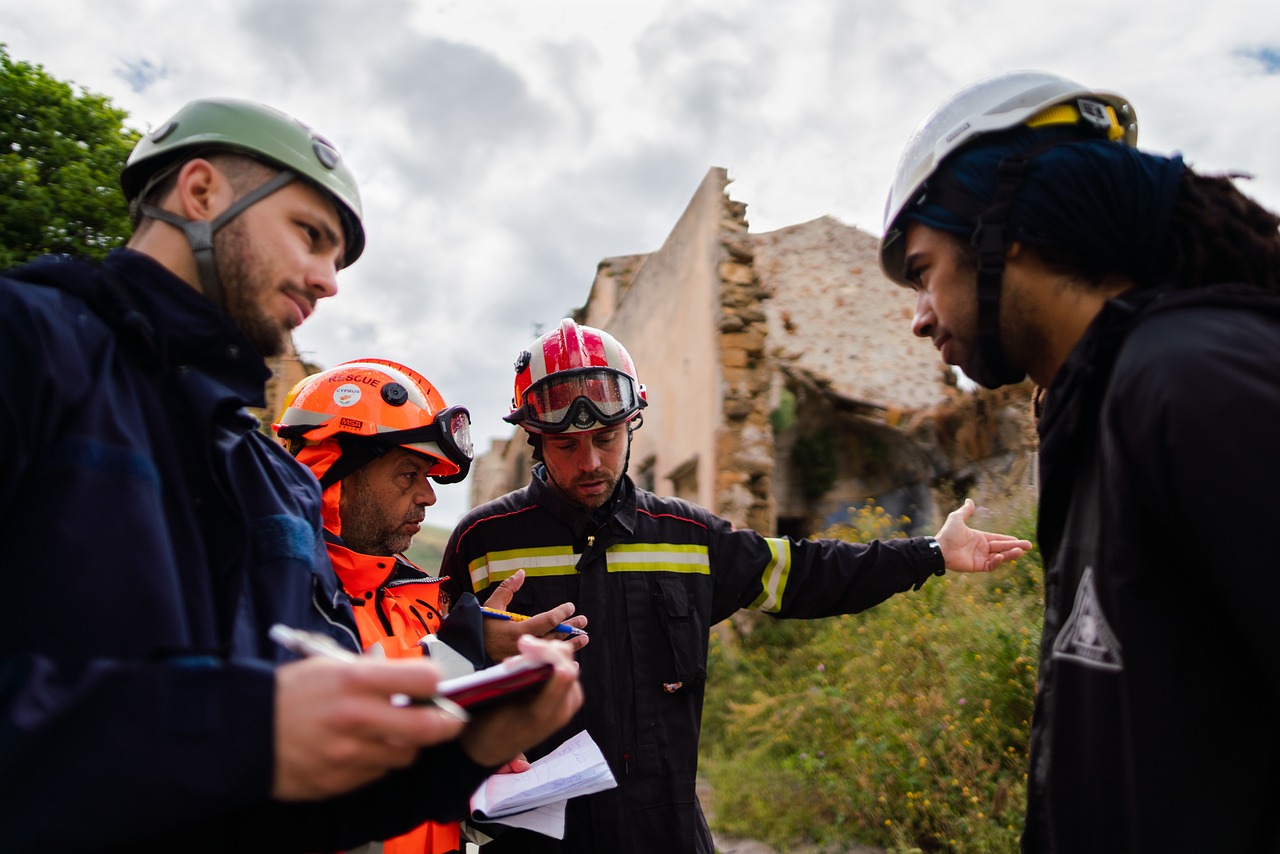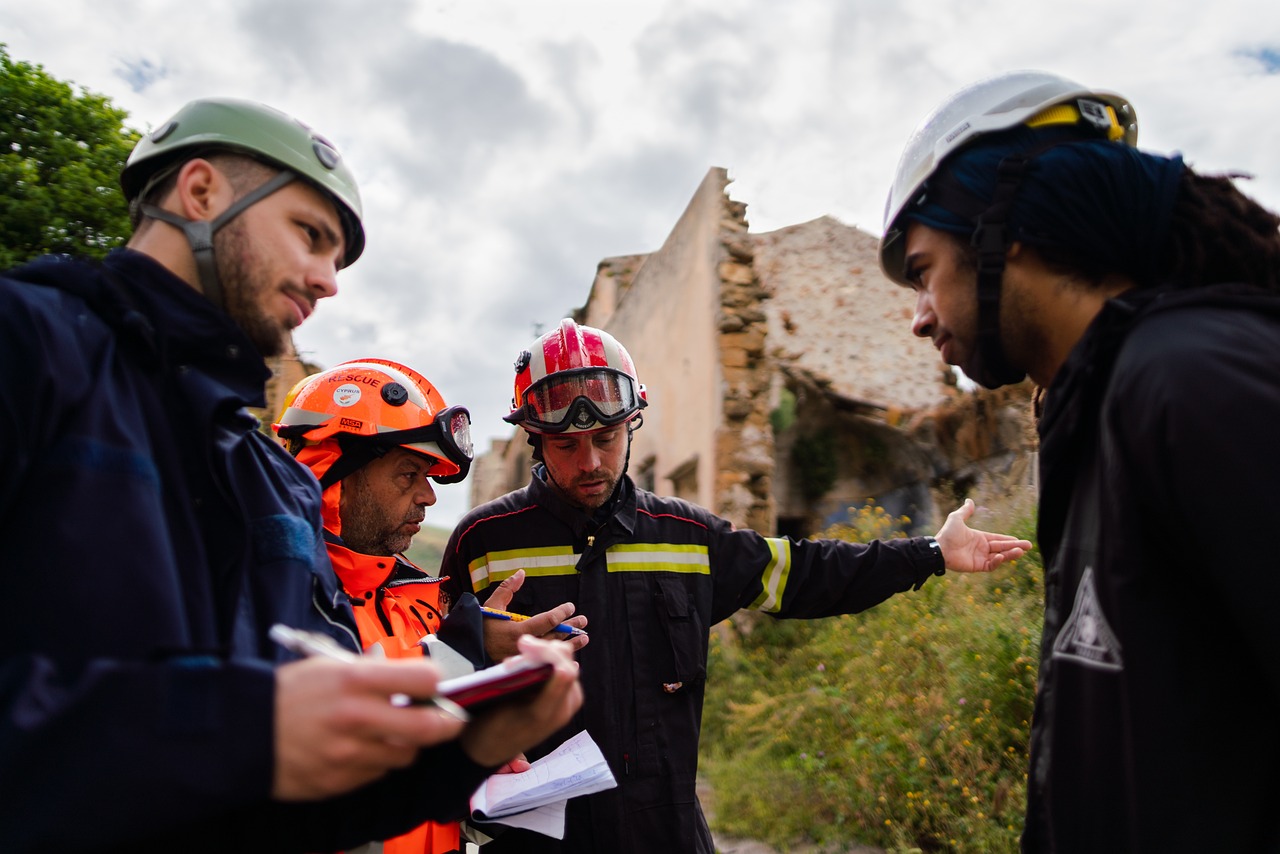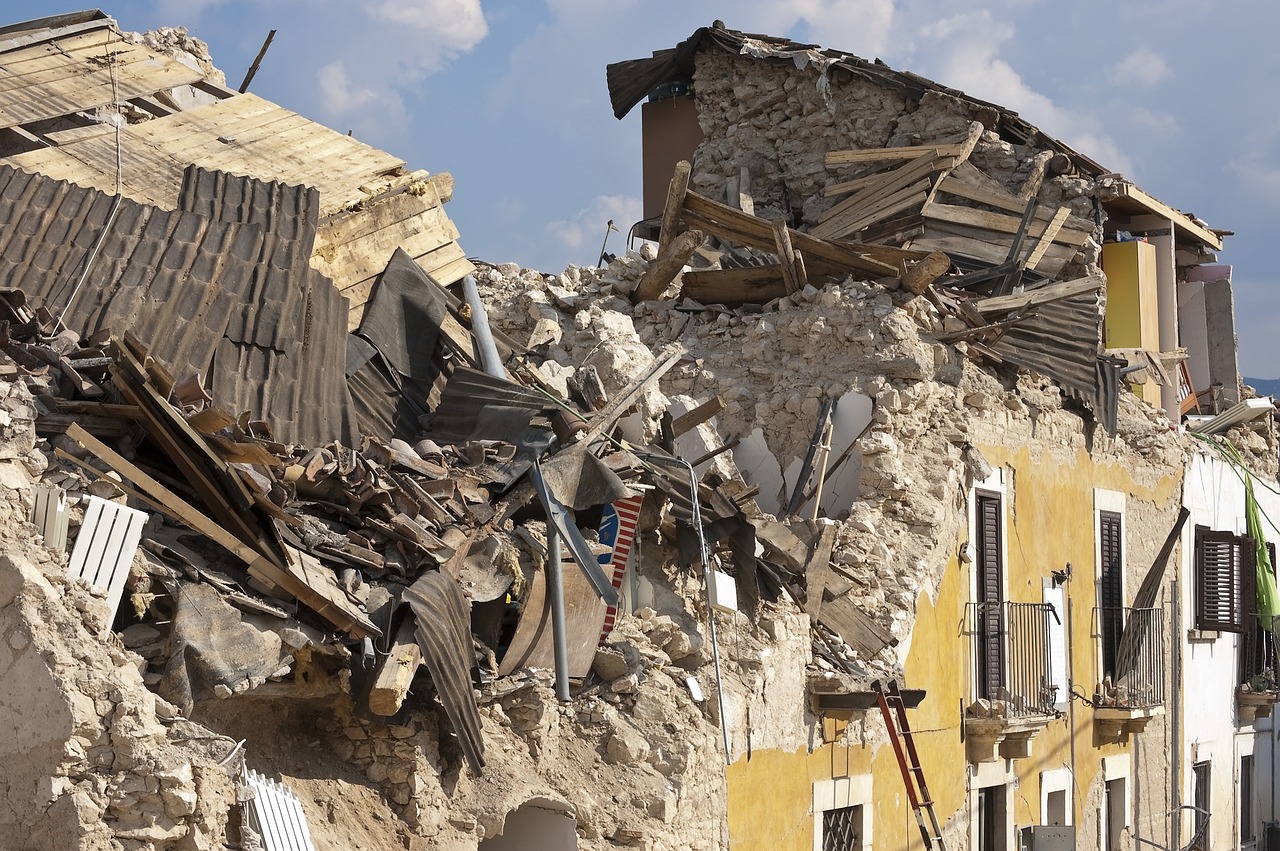Effects of Disasters on Economy and How to Cope
Disasters, whether natural or man-made, can strike at any moment, leaving a trail of destruction in their wake. The impact on the economy can be profound and multifaceted, affecting individuals, businesses, and entire communities. Understanding these effects is crucial for developing effective coping strategies. In this article, we will explore the immediate and long-term economic consequences of disasters, as well as the psychological effects they have on consumer behavior. We will also discuss how governments can respond effectively to mitigate these impacts and foster recovery.
When a disaster occurs, the effects are felt almost instantly. Financial losses mount due to the destruction of property, disruption of services, and a sharp decline in productivity. For instance, a hurricane might wipe out homes and businesses, leaving people without shelter or jobs. This sudden loss can trigger a swift downturn in both local and national economies. In such scenarios, the immediate costs can be staggering, often leading to a significant drop in economic activity. Local businesses may struggle to reopen, and consumers may tighten their belts, leading to a vicious cycle of economic decline.
The repercussions of disasters extend far beyond the initial chaos. They often result in prolonged economic challenges that can take years to overcome. Infrastructure damage is a major factor here. When roads, bridges, and utilities are compromised, the recovery process is hindered. The longer it takes to restore these essential services, the more difficult it becomes for businesses to operate and for communities to thrive. The economic growth of affected regions can stagnate, leaving them vulnerable to future disasters.
Disasters frequently lead to significant damage to critical infrastructure. This includes transportation systems, utilities, and communication networks. The importance of rebuilding efforts cannot be overstated, as they are vital for economic recovery. Delayed restoration can lead to increased costs and prolonged disruptions in services. For example, if a major highway is out of commission, logistics and supply chains are severely impacted, affecting everything from food delivery to retail operations.
Repairing damaged infrastructure can be prohibitively expensive. Governments and communities often face a daunting financial burden when it comes to funding repairs. This necessitates effective budgeting and resource allocation. The costs associated with rebuilding can drain public funds, diverting resources away from other essential services. For instance, a city that needs to allocate a significant portion of its budget to repair roads may find itself unable to invest in education or healthcare, leading to a ripple effect of challenges throughout the community.
Transportation systems are the lifeblood of economic activity. When disasters disrupt these systems, the consequences can be severe. Businesses rely on efficient logistics to deliver goods and services, and any interruption can lead to delays and increased costs. Consumers may find themselves facing empty shelves in stores, as supply chains struggle to recover. This disruption not only affects the immediate availability of products but can also lead to long-term shifts in consumer behavior and business practices.
Disasters can result in significant workforce displacement, impacting productivity on a large scale. When people lose their jobs due to business closures or destruction of workplaces, the local economy suffers. This section examines the effects of job loss and the challenges faced by displaced workers. Finding new employment opportunities can be daunting, particularly in areas where businesses are struggling to recover. The emotional toll of job loss can also lead to decreased motivation and increased stress, further complicating the recovery process.
The psychological aftermath of disasters can influence economic behavior in subtle yet significant ways. Trauma and stress can affect consumer confidence, leading to decreased spending and investment. When people feel uncertain about their safety and financial stability, they are less likely to make purchases or invest in their futures. This decline in consumer confidence can prolong economic recovery, creating a challenging environment for local businesses.
Post-disaster environments often see a dip in consumer confidence. Factors contributing to this decline include fear of future disasters, loss of income, and uncertainty about the economy. Local businesses may struggle to regain their footing in such an atmosphere, as consumers prioritize saving over spending. This can create a cycle of economic stagnation, making it even harder for communities to bounce back.
Investors may be reluctant to invest in disaster-stricken areas, fearing that their investments will be at risk. This hesitation can stifle economic growth and recovery efforts in affected regions. When capital is scarce, businesses struggle to rebuild and expand, further delaying recovery. It’s crucial for governments to create an environment that encourages investment, perhaps through incentives or grants, to help revitalize these areas.
Effective government response is crucial for economic recovery following disasters. Various strategies can be implemented to support communities and stimulate economic growth post-disaster. Quick action can make a significant difference in how quickly an area can recover.
Emergency funding plays a pivotal role in recovery efforts. Quick financial assistance to affected areas can help jumpstart the rebuilding process. Various types of funding are available, including federal grants, loans, and private donations. The key is to ensure that these funds are allocated efficiently and effectively to meet the most pressing needs.
Investing in infrastructure repair and improvement is vital for long-term recovery. Strategic investments can enhance resilience and promote economic revitalization in disaster-affected regions. By prioritizing infrastructure, governments can not only restore essential services but also create jobs and stimulate economic activity, paving the way for a brighter future.
- What are the immediate economic impacts of disasters?
Disasters can lead to property destruction, service disruption, and loss of productivity, resulting in a swift economic downturn. - How can governments help in disaster recovery?
Governments can provide emergency funding, invest in infrastructure, and create policies that encourage investment in affected areas. - What psychological effects do disasters have on consumers?
Disasters can lead to decreased consumer confidence and spending, impacting local businesses and the overall economy.

Immediate Economic Impact
Disasters often strike with little warning, leaving a trail of chaos that can send shockwaves through local and national economies. The immediate financial losses can be staggering, primarily due to the destruction of property, disruption of essential services, and a sudden loss of productivity. Imagine waking up one day to find that your business, which took years to build, is now buried under rubble. This scenario is not just a nightmare; it’s a harsh reality for many who face the aftermath of a disaster.
When a disaster occurs, the first thing that often comes to mind is the physical damage. Buildings, homes, and infrastructure can be devastated, leading to a significant decline in property values. This not only affects individual homeowners but also has a ripple effect on local businesses that rely on a stable community to thrive. The disruption of services, such as electricity, water, and transportation, further complicates matters. Without these essential services, businesses struggle to operate, leading to a swift downturn in economic activity. In fact, studies have shown that regions hit by disasters can experience a decline in GDP by as much as 5% in the immediate aftermath.
The loss of productivity is another critical factor. When employees are unable to reach their workplaces due to damaged roads or public transport systems, the workforce is significantly reduced. This not only hampers the operations of local businesses but also leads to lost wages, further straining the economy. For example, a factory that relies on just-in-time delivery may find its operations halted due to supply chain disruptions caused by a disaster. The implications of this are profound, as it can lead to layoffs, which in turn affects consumer spending power.
To better illustrate the immediate economic impact of disasters, consider the following table:
| Impact Factor | Description | Potential Economic Loss |
|---|---|---|
| Property Damage | Destruction of homes and businesses | Billions in repair costs |
| Service Disruption | Loss of utilities and transportation | Reduction in business operations |
| Workforce Reduction | Employees unable to work | Loss of wages and productivity |
As we can see, the immediate economic impact of disasters is profound and multifaceted. It’s not just about the physical destruction; it’s about how that destruction reverberates throughout the economy, affecting everything from individual livelihoods to the overall economic health of a region. The challenge lies not only in addressing these immediate impacts but also in finding ways to recover and rebuild stronger than before.

Long-term Economic Consequences
The repercussions of disasters reach far beyond the immediate aftermath, often weaving a complex web of long-term economic challenges that can stifle growth and development for years to come. When a disaster strikes, the initial shock may seem overwhelming, but the true test comes in the months and years that follow. Communities must grapple with the lingering effects on their economies, which can be as devastating as the disaster itself. One of the most significant long-term consequences is the damage to critical infrastructure, which can take years to rebuild and restore. This leads to a ripple effect that impacts various sectors, from transportation to healthcare, and ultimately affects the daily lives of residents.
Infrastructure damage is not just about broken roads or collapsed buildings; it’s about the lifeblood of an economy. For instance, when transportation systems are compromised, the movement of goods and services is severely disrupted. Businesses struggle to maintain supply chains, and consumers face delays in accessing essential products. The economic implications can be staggering, as highlighted in the table below:
| Infrastructure Type | Impact of Damage | Recovery Timeframe |
|---|---|---|
| Transportation | Disrupted logistics and increased costs | 1-5 years |
| Utilities | Increased operational costs for businesses | 6 months - 2 years |
| Communication | Loss of connectivity affecting business operations | 1-3 years |
Moreover, the cost of repairs can be prohibitively expensive, placing a significant financial burden on both governments and local communities. Many municipalities find themselves stretched thin, trying to balance budgets while addressing the urgent need for repairs. This often leads to tough decisions about resource allocation, as funds that could have been used for education or public health are diverted to infrastructure repair. The financial strain can hinder economic growth, creating a vicious cycle where recovery becomes increasingly difficult.
Another critical aspect of long-term economic consequences is workforce displacement. Disasters can lead to significant job losses in affected areas, which not only impacts the individuals who lose their jobs but also the overall productivity of the region. The challenges faced by displaced workers can be daunting; finding new employment opportunities in a recovering economy can be like searching for a needle in a haystack. The longer individuals remain unemployed, the more their skills may deteriorate, making it even harder for them to re-enter the workforce. This situation can create a long-lasting economic impact, as communities struggle to regain their pre-disaster employment levels.
In summary, the long-term economic consequences of disasters are multifaceted and interconnected. From infrastructure damage to workforce displacement, these challenges can hinder recovery efforts and economic growth for years to come. Understanding these implications is crucial for developing effective coping strategies that can help individuals, businesses, and governments navigate the tumultuous waters following a disaster.
- What are the primary long-term economic impacts of disasters? Disasters can lead to infrastructure damage, workforce displacement, and increased financial burdens on governments and communities.
- How does infrastructure damage affect local economies? Damage to infrastructure disrupts transportation, utilities, and communication, leading to increased costs and delays for businesses and consumers.
- What can governments do to mitigate long-term economic consequences? Governments can invest in infrastructure repair, provide emergency funding, and support workforce development programs to promote recovery.

Infrastructure Damage
When disasters strike, one of the most visible and immediate impacts is the damage to infrastructure. This damage can range from collapsed bridges and destroyed roads to compromised utilities and communication systems. The consequences of such destruction are profound, affecting not just the immediate area but also the broader economy. Imagine a bustling city suddenly rendered silent because its transportation systems are in ruins. The ripple effects can be devastating. Without reliable infrastructure, businesses face significant challenges in maintaining operations, and communities struggle to access essential services.
Rebuilding infrastructure is not merely about restoring what was lost; it’s about creating a more resilient framework that can withstand future disasters. This means investing in modern technologies and materials that enhance durability. However, the costs associated with such repairs can be staggering. For instance, consider the following table that outlines the estimated costs of repairing different types of infrastructure:
| Type of Infrastructure | Estimated Repair Cost (in millions) |
|---|---|
| Roads and Highways | $500 |
| Bridges | $300 |
| Utilities (Water, Electricity) | $400 |
| Communication Systems | $200 |
As shown in the table, the financial burden of repairing infrastructure can quickly escalate. Communities often find themselves in a precarious position, needing to balance immediate repair needs with long-term financial sustainability. This is where effective budgeting and resource allocation become crucial. Local governments must prioritize which projects to tackle first, often relying on emergency funds and federal assistance.
The impact of infrastructure damage extends beyond just the financial aspect. It can severely disrupt daily life, affecting everything from public transportation to emergency services. For instance, when roads are impassable, emergency responders may struggle to reach those in need, exacerbating the situation. Furthermore, businesses reliant on transportation for supply chains may face delays, leading to increased prices for consumers. This creates a vicious cycle that can hinder economic recovery for years.
In summary, infrastructure damage from disasters not only poses immediate challenges but also presents long-term economic hurdles. The necessity for swift and effective rebuilding efforts cannot be overstated. Communities must come together to advocate for necessary funding and support, ensuring that their infrastructure is not just restored but improved for the future.
- What are the most common types of infrastructure damaged in disasters?
Commonly damaged infrastructure includes roads, bridges, utilities (like water and electricity), and communication systems.
- How can communities prepare for infrastructure damage?
Communities can prepare by investing in resilient infrastructure, creating emergency response plans, and securing funding for repairs.
- What role does government play in infrastructure recovery?
Governments provide funding, resources, and support for rebuilding efforts and can help prioritize which projects are most critical for recovery.

Cost of Repairs
When a disaster strikes, the financial burden of repairs can be overwhelming for both governments and communities. The costs associated with restoring infrastructure, homes, and businesses can skyrocket, leading to a strain on local and national budgets. For instance, consider a hurricane that devastates a coastal city. The immediate costs of clearing debris, repairing roads, and restoring utilities can reach millions, if not billions, of dollars. This doesn’t even account for the long-term expenses related to rebuilding homes and businesses, which can take years to fully address.
The challenge lies in the fact that many communities are not adequately prepared for such financial shocks. In fact, a recent study revealed that over 60% of small businesses do not have disaster recovery plans in place, leaving them vulnerable to the economic fallout of unexpected events. The costs of repairs can be categorized into several key areas:
- Infrastructure Repairs: Roads, bridges, and public transportation systems often require extensive repairs, which can be both time-consuming and expensive.
- Utility Restoration: Restoring electricity, water, and gas services is critical for the safety and comfort of residents, and can incur significant costs.
- Housing Reconstruction: Many families may lose their homes, requiring not only repairs but also the construction of new housing units.
- Business Recovery: Local businesses may face losses due to damage and decreased customer traffic, necessitating financial aid and support for recovery.
To illustrate these costs further, let’s take a look at a hypothetical example of a city affected by a major flood:
| Type of Repair | Estimated Cost |
|---|---|
| Road Repairs | $5 million |
| Utility Restoration | $3 million |
| Housing Reconstruction | $10 million |
| Business Recovery Programs | $2 million |
| Total Estimated Cost | $20 million |
As shown in the table above, the total estimated cost of repairs can be staggering. This financial strain not only impacts the immediate recovery efforts but also has long-term effects on the community’s economic health. It can lead to increased taxes, cuts in public services, and a prolonged period of economic instability.
Moreover, the complexity of funding these repairs can add another layer of difficulty. Governments often rely on a mix of federal aid, state funding, and local resources. However, the allocation of these funds can be slow and bureaucratic, delaying essential repairs and prolonging the economic recovery process.
In conclusion, understanding the following a disaster is crucial for effective planning and recovery. Communities must prioritize preparedness and establish solid financial strategies to mitigate the impact of future disasters. This proactive approach can help ensure that when the next disaster strikes, they are better equipped to handle the costs and restore their economies more swiftly.
Q: What types of disasters typically incur high repair costs?
A: Natural disasters such as hurricanes, floods, earthquakes, and wildfires often lead to significant repair costs due to widespread damage to infrastructure and properties.
Q: How can communities prepare for the costs associated with disaster repairs?
A: Communities can prepare by developing disaster recovery plans, establishing emergency funds, and investing in resilient infrastructure to minimize damage.
Q: Are there government programs that assist with repair costs?
A: Yes, many governments offer disaster relief programs, grants, and low-interest loans to help affected individuals and businesses recover from disaster-related damages.

Impact on Transportation
Transportation systems are the lifeblood of any economy, serving as the veins through which goods, services, and people flow. When a disaster strikes, these vital arteries can become severely damaged or completely blocked, leading to a cascade of economic repercussions. Imagine a bustling city suddenly brought to a standstill, where roads are impassable, rail lines are down, and airports are closed. This is not just an inconvenience; it can lead to significant financial losses for businesses and consumers alike.
One of the most immediate effects of a disaster on transportation is the disruption of logistics and supply chains. Businesses rely on the timely delivery of goods to maintain operations and meet customer demands. When transportation routes are compromised, delays ensue, and inventory shortages can occur. This can create a ripple effect, causing businesses to lose revenue and consumers to face higher prices or limited access to essential products. For instance, if a natural disaster damages a major highway, the cost of transporting goods may increase due to longer detours, ultimately leading to inflated prices for consumers.
Furthermore, the impact on transportation doesn't just stop at logistics; it also affects the workforce. Employees who rely on public transportation may find their commutes disrupted, leading to absenteeism and decreased productivity. In the aftermath of a disaster, the workforce may face challenges in accessing their workplaces, which can lead to a significant decline in economic output. This situation can be particularly dire in areas where alternative transportation options are limited, forcing workers to either find new jobs closer to home or endure lengthy commutes.
In addition to immediate disruptions, the long-term implications of transportation damage can hinder economic recovery. Rebuilding transportation infrastructure is often a lengthy and costly process. Governments must prioritize repairs, which can divert funds from other essential services. The table below illustrates the typical costs associated with repairing various transportation infrastructures following a disaster:
| Type of Infrastructure | Estimated Repair Cost | Timeframe for Repair |
|---|---|---|
| Roads and Highways | $10 million - $100 million | 6 months - 2 years |
| Bridges | $5 million - $50 million | 1 year - 3 years |
| Railroads | $20 million - $200 million | 1 year - 5 years |
| Airports | $50 million - $500 million | 2 years - 5 years |
As shown, the costs and timeframes for repairing transportation infrastructure can vary significantly. This not only affects the speed of recovery but also places a heavy burden on local and national budgets. In times of crisis, governments must make tough decisions about where to allocate limited resources, and transportation often competes with other critical needs such as housing and healthcare.
In summary, the impact of disasters on transportation is profound and multifaceted. It disrupts logistics, affects workforce productivity, and poses significant financial challenges for both businesses and governments. The road to recovery is often long and winding, but understanding these impacts can help stakeholders develop more effective strategies to mitigate the effects of future disasters.
- How do disasters typically affect transportation systems? Disasters can damage roads, bridges, and rail lines, leading to significant disruptions in logistics and supply chains.
- What are the long-term effects of damaged transportation infrastructure? Long-term effects include increased repair costs, prolonged recovery times, and potential economic downturns due to disrupted commerce.
- How can governments prepare for transportation disruptions caused by disasters? Governments can invest in robust infrastructure, develop emergency response plans, and maintain contingency budgets to address potential damages.

Workforce Displacement
Disasters can create a ripple effect that extends far beyond the immediate chaos, and one of the most profound impacts is the issue of . When natural calamities strike, they often lead to significant job losses, leaving many individuals scrambling for new employment opportunities. Imagine a small town where a hurricane destroys the local factory that employed hundreds. The sudden loss of jobs not only affects those workers but also their families and the entire community, leading to a cycle of economic decline.
Displaced workers face numerous challenges in the aftermath of a disaster. Finding new jobs is often easier said than done, especially in areas where the economy has been severely impacted. The job market may shrink as businesses close or reduce their workforce, making it increasingly difficult for those affected to secure employment. Moreover, the skills that workers possess may not align with the available jobs, leading to a mismatch that further complicates their situation.
Another layer of complexity arises from the psychological toll that disasters take on individuals. The stress and trauma associated with losing a job can lead to decreased motivation and confidence, making the job search even more daunting. In fact, studies have shown that emotional well-being plays a critical role in a person's ability to find new employment. The fear of instability can create a hesitancy to pursue new opportunities, resulting in prolonged periods of unemployment.
To illustrate the extent of workforce displacement, consider the following table that outlines the potential impacts on various sectors:
| Sector | Impact of Displacement | Recovery Time |
|---|---|---|
| Manufacturing | Job losses due to factory closures | 6 months to 2 years |
| Retail | Reduced consumer spending leads to layoffs | 3 months to 1 year |
| Healthcare | Staff shortages due to evacuations | 1 month to 6 months |
In response to workforce displacement, communities and governments must implement strategies to assist those affected. Job training programs can help displaced workers acquire new skills that align with the evolving job market. Additionally, local governments can provide incentives for businesses to hire displaced workers, fostering a quicker return to economic stability. It's crucial to recognize that while disasters can disrupt lives and livelihoods, with the right support and resources, individuals can rebuild and thrive once more.
- What is workforce displacement? Workforce displacement refers to the loss of jobs and the challenges faced by workers in finding new employment due to external factors like disasters.
- How can displaced workers find new jobs? Displaced workers can seek job training programs, networking opportunities, and local government assistance to help them transition to new employment.
- What role do governments play in workforce recovery? Governments can provide emergency funding, job training, and incentives for businesses to hire displaced workers, aiding in the recovery process.

Psychological Effects on Economies
The aftermath of a disaster extends far beyond the physical destruction and financial losses; it seeps into the very psyche of individuals and communities. The psychological effects of disasters can create a ripple effect that significantly impacts economic behavior. When people experience trauma, their emotional well-being takes a hit, and this can lead to a decline in consumer confidence and spending. Imagine a community that has just faced a devastating hurricane. The initial shock and devastation can lead to feelings of despair, uncertainty, and fear, which can paralyze economic activity.
One of the first signs of this psychological impact is often a notable dip in consumer confidence. When individuals feel insecure about their safety, jobs, or financial stability, they tend to tighten their wallets. This behavior stems from a natural instinct to conserve resources in times of uncertainty. As spending drops, local businesses suffer, leading to a vicious cycle of economic decline. For instance, if a restaurant owner notices that fewer customers are dining out after a disaster, they might cut back on staff or reduce inventory, further compounding the economic struggles faced by the community.
Additionally, the hesitation to invest in disaster-stricken areas can stifle recovery efforts. Investors are often wary of putting their money into regions that have recently faced calamity. They may fear that the area isn’t stable enough for long-term investments, which can lead to a prolonged economic downturn. This reluctance can be attributed to a fundamental human response; when faced with uncertainty, people tend to retreat rather than take risks. The resulting lack of investment can hinder job creation and infrastructure development, making recovery even more challenging.
To illustrate this point, consider the following table that summarizes the psychological impacts on economic behavior:
| Psychological Effect | Economic Impact |
|---|---|
| Reduced Consumer Confidence | Decrease in spending and investment |
| Increased Uncertainty | Hesitation in investments and business expansion |
| Fear and Anxiety | Lower workforce productivity and morale |
| Trauma and Stress | Potential long-term economic stagnation |
In conclusion, the psychological effects of disasters are profound and can significantly shape the economic landscape of affected areas. It’s essential for communities to not only focus on physical recovery but also address the emotional and psychological needs of their residents. By fostering a sense of safety and stability, communities can gradually rebuild consumer confidence and encourage investment, paving the way for a robust economic recovery.
- How do psychological effects influence economic recovery?
The psychological impact of disasters can lead to decreased consumer confidence and spending, which in turn slows down economic recovery. - What can be done to improve consumer confidence post-disaster?
Communities can enhance consumer confidence by providing clear communication, support services, and rebuilding efforts that demonstrate commitment to recovery. - Why are investors hesitant to invest in disaster-stricken areas?
Investors often fear that the instability and uncertainty following a disaster may lead to further economic challenges, making them cautious about committing funds.

Consumer Confidence
After a disaster strikes, the ripple effects can be felt far and wide, but one of the most significant impacts is often on . Imagine a bustling marketplace suddenly silenced by the aftermath of a natural calamity; the energy fades, and uncertainty looms large. This decline in confidence can be attributed to various factors, including fear of future disasters, economic instability, and the psychological toll that such events take on individuals and communities.
When people are uncertain about their safety and financial security, they tend to tighten their belts. They start to second-guess their spending habits, which can lead to a vicious cycle of economic stagnation. For instance, if consumers are worried about their jobs or the state of the economy, they might delay purchasing big-ticket items or even everyday necessities. This hesitation can result in a decrease in demand for goods and services, which in turn impacts local businesses that rely on consumer spending to thrive.
It's essential to understand that consumer confidence is not just a fleeting feeling; it has tangible effects on the economy. A drop in confidence can lead to:
- Reduced Spending: When consumers hold back on spending, businesses see a decline in sales, leading to potential layoffs or closures.
- Investment Slowdown: Investors may pull back from funding new ventures in areas perceived as risky, further stunting economic growth.
- Long-term Economic Challenges: A prolonged period of low consumer confidence can lead to a sluggish recovery, making it harder for communities to bounce back.
Moreover, the media plays a significant role in shaping public perception. News coverage of disasters can amplify fears and uncertainties, creating a feedback loop that exacerbates the situation. If consumers are bombarded with images of destruction and stories of hardship, it can lead to a more pessimistic outlook, further eroding confidence.
To combat this, businesses and governments need to take proactive steps to restore consumer confidence. This can include transparent communication about recovery efforts, showcasing resilience and progress in affected areas, and providing financial incentives to encourage spending. By fostering a sense of safety and stability, communities can begin to rebuild not just their infrastructure but also the trust and confidence of their consumers.
In conclusion, the psychological aftermath of a disaster significantly influences consumer behavior. Understanding the intricate relationship between disasters and consumer confidence is crucial for effective recovery strategies. By addressing the fears and uncertainties that arise, we can pave the way for a more resilient economic future.
- What is consumer confidence?
Consumer confidence measures how optimistic or pessimistic consumers are regarding their expected financial situation and the overall state of the economy. - How does a disaster affect consumer confidence?
Disasters create uncertainty and fear, leading consumers to reduce spending, which can slow economic recovery. - What can governments do to improve consumer confidence after a disaster?
Governments can communicate effectively about recovery efforts, provide financial assistance, and invest in rebuilding infrastructure.

Investment Hesitation
When a disaster strikes, the immediate aftermath can leave a community reeling, but it also sends ripples through the broader economic landscape. One of the most profound effects is the phenomenon of . Investors, both large and small, often find themselves in a state of uncertainty, grappling with questions about the stability and viability of their investments in disaster-affected areas. This hesitation can significantly stifle economic recovery, as capital is the lifeblood of growth and revitalization.
Imagine a bustling city suddenly transformed into a ghost town after a natural disaster. The streets that once buzzed with life are now eerily quiet, and businesses that thrived are shuttered. In such an environment, investors become wary. They start to wonder: Is it safe to invest here? Will the local economy bounce back? What if another disaster strikes? These questions can lead to a paralysis of sorts, where potential investments are put on hold, waiting for a clearer picture to emerge.
Moreover, the psychological impact of disasters can create a ripple effect that discourages investment. A survey conducted in the aftermath of recent disasters revealed that over 60% of investors felt hesitant to commit funds to areas that had recently experienced significant turmoil. This statistic underscores a critical point: when confidence wanes, so does the flow of capital. The fear of losing money in an unstable environment can lead investors to seek safer, more predictable markets, leaving the affected areas in a cycle of stagnation.
The impact of this investment hesitation can be profound. Without the influx of new capital, businesses struggle to recover, leading to prolonged economic challenges. Consider the following:
| Impact of Investment Hesitation | Consequences |
|---|---|
| Reduced Capital Flow | Businesses lack funds for recovery and growth. |
| Job Losses | Increased unemployment as businesses close or downsize. |
| Stagnant Economy | Long-term economic growth is hindered. |
| Lower Consumer Spending | Consumers become cautious, further slowing recovery. |
In the face of such challenges, how can communities and governments address investment hesitation? One effective strategy is to foster transparency and communication. By providing clear information about recovery efforts, infrastructure rebuilding, and economic forecasts, local governments can help ease investor fears. Additionally, offering incentives such as tax breaks or grants for businesses willing to invest in these areas can also stimulate interest. It’s about creating an environment where investors feel confident that their money will not only be safe but will also contribute to a thriving community.
Ultimately, overcoming investment hesitation is crucial for revitalizing disaster-stricken areas. By addressing the concerns of investors and creating a supportive economic environment, communities can pave the way for recovery and growth. The road may be long, but with the right strategies in place, it’s a journey that can lead to a stronger, more resilient economy.
- What is investment hesitation?
Investment hesitation refers to the reluctance of investors to commit funds to areas affected by disasters due to concerns about stability and recovery. - How does investment hesitation affect the economy?
It can lead to reduced capital flow, job losses, and a stagnant economy, hindering recovery efforts. - What can governments do to encourage investment?
Governments can foster transparency, provide clear information about recovery efforts, and offer financial incentives to attract investors. - Why do investors hesitate after a disaster?
Investors often fear losing money in unstable environments and are concerned about potential future disasters.

Government Response and Recovery Strategies
When disasters strike, the role of government response becomes paramount in steering communities towards recovery and revitalization. Effective government strategies can significantly mitigate the economic fallout resulting from such calamities. One of the first steps is the implementation of emergency funding. Quick financial assistance is essential to help affected areas stabilize and begin the recovery process. Governments can allocate funds through various channels, such as grants, loans, and direct aid, ensuring that resources reach those in dire need as swiftly as possible.
Moreover, the allocation of emergency funding can be structured in several ways. For instance, governments might establish a disaster relief fund that is specifically earmarked for immediate response efforts. This fund can be accessed by local governments and organizations to address urgent needs such as food, shelter, and medical services. The table below illustrates the types of funding mechanisms typically available:
| Type of Funding | Description |
|---|---|
| Grants | Non-repayable funds provided to support recovery efforts. |
| Low-Interest Loans | Loans offered at reduced interest rates to help businesses rebuild. |
| Direct Aid | Cash assistance provided to individuals and families affected by disasters. |
In addition to emergency funding, investing in infrastructure repair is crucial for long-term recovery. Disasters often leave behind a trail of destruction that can cripple local economies, making it vital for governments to prioritize the restoration of critical infrastructure such as roads, bridges, and utilities. Strategic investments not only facilitate immediate recovery but also enhance resilience against future disasters. For example, upgrading existing infrastructure to withstand severe weather conditions can save communities from experiencing similar devastation in the future.
Furthermore, governments can implement community engagement initiatives to involve local populations in recovery efforts. This could include town hall meetings where residents can voice their concerns, suggest recovery strategies, and participate in decision-making processes. By fostering a sense of community and collaboration, governments can ensure that recovery plans are not only effective but also tailored to the unique needs of each community.
Additionally, the establishment of public-private partnerships can significantly enhance recovery efforts. By collaborating with private sector organizations, governments can leverage additional resources and expertise. These partnerships can facilitate the rebuilding of infrastructure and stimulate economic activity, creating jobs and revitalizing local economies. For instance, a government might partner with construction firms to expedite the rebuilding of damaged schools and hospitals, ensuring that essential services are restored as quickly as possible.
Lastly, a comprehensive disaster management plan is essential for future preparedness. Governments should develop and regularly update plans that outline response strategies, recovery protocols, and mitigation measures. This proactive approach not only prepares communities for potential disasters but also instills confidence among residents and investors alike. When people see that their government is prepared and capable of responding effectively, it can rejuvenate consumer confidence and encourage economic investment.
- What is the first step governments take after a disaster?
Governments typically initiate emergency funding and relief efforts to address immediate needs such as food, shelter, and medical care. - How can infrastructure investment help in recovery?
Investing in infrastructure repair enhances resilience, promotes economic activity, and ensures essential services are restored quickly. - What role do public-private partnerships play?
They leverage additional resources and expertise, facilitating faster recovery and rebuilding efforts.

Emergency Funding
In the wake of a disaster, becomes a lifeline for affected communities. The immediate aftermath often sees a surge in the need for financial resources to address urgent needs such as shelter, food, and medical care. Without prompt financial assistance, the recovery process can be significantly hampered, leading to prolonged suffering and economic downturn. Therefore, understanding the types of funding available and the mechanisms for accessing these resources is crucial for effective recovery.
Emergency funding can come from various sources, including federal and state governments, non-profit organizations, and even private sector contributions. The Federal Emergency Management Agency (FEMA) is typically at the forefront of these efforts in the United States, providing crucial financial aid to both individuals and local governments. Here’s a quick overview of some of the main types of emergency funding:
| Type of Funding | Description | Source |
|---|---|---|
| Individual Assistance | Financial help for individuals affected by disasters, covering temporary housing, home repairs, and other disaster-related expenses. | FEMA |
| Public Assistance | Funding for state and local governments to repair and restore public infrastructure and services. | FEMA |
| Disaster Loans | Low-interest loans for businesses and homeowners to repair or replace damaged property. | Small Business Administration (SBA) |
| Non-Profit Assistance | Grants and funding from non-profit organizations aimed at specific recovery efforts. | Various Non-Profits |
Accessing these funds can sometimes feel like navigating a maze. It’s essential for individuals and local governments to be aware of the application processes and eligibility criteria associated with each funding source. For example, FEMA’s Individual Assistance program requires applicants to provide documentation of their losses and proof of residency. This can be a daunting task, especially when people are still reeling from the disaster.
Moreover, the speed at which these funds are disbursed can significantly affect recovery outcomes. Quick access to funds allows for immediate relief, helping to stabilize communities and restore normalcy. On the other hand, delays can lead to increased hardship, forcing individuals and businesses to make tough decisions about their futures. Therefore, it is crucial for governments to streamline application processes and ensure that funds are allocated efficiently.
In conclusion, is a critical component of disaster recovery. By understanding the sources of funding and the processes involved, communities can better prepare for the economic challenges that follow a disaster. This proactive approach not only aids in immediate recovery but also lays the groundwork for long-term resilience against future calamities.
- What is emergency funding? Emergency funding refers to financial assistance provided to individuals, businesses, and governments in the aftermath of a disaster to help cover immediate needs and facilitate recovery.
- How can I apply for emergency funding? Applications for emergency funding can typically be submitted through government agencies like FEMA or local non-profits. Each funding source will have its own application process and eligibility requirements.
- What types of expenses can emergency funding cover? Emergency funding can cover a range of expenses, including temporary housing, home repairs, medical bills, and infrastructure restoration.
- How quickly can I receive emergency funds? The time it takes to receive emergency funds can vary based on the funding source and the complexity of your application. It’s important to submit all required documentation promptly to avoid delays.

Infrastructure Investment
Investing in infrastructure repair and improvement is not just a necessity; it’s a lifeline for communities grappling with the aftermath of disasters. Think of infrastructure as the backbone of the economy—when it’s strong, everything else can flourish. However, when disasters strike, this backbone can be severely compromised, leading to a ripple effect that can stifle economic activity for years. The challenge lies in understanding how to effectively channel resources into rebuilding efforts that not only restore what was lost but also enhance resilience against future calamities.
One of the most significant aspects of infrastructure investment is its role in economic revitalization. When governments prioritize the repair of roads, bridges, and public transportation systems, they are not just fixing physical structures; they are also reigniting the engines of commerce. For instance, a well-maintained road network facilitates the efficient movement of goods, reducing costs for businesses and making it easier for consumers to access products and services. This can lead to a swift recovery in local economies, as businesses can resume operations and consumers regain confidence in their purchasing power.
Moreover, investing in infrastructure can create a multitude of job opportunities. During the rebuilding phase, construction projects require a skilled workforce, which can help absorb some of the displaced workers caused by disasters. This not only aids in reducing unemployment but also fosters a sense of community as individuals come together to rebuild their surroundings. The jobs created can range from manual labor to specialized positions, offering a diverse array of opportunities for those affected. Here’s a brief overview of the types of jobs that infrastructure projects can generate:
| Type of Job | Description |
|---|---|
| Construction Workers | Engaged in physical labor to build and repair infrastructure. |
| Engineers | Responsible for designing and overseeing construction projects. |
| Project Managers | Coordinate and manage infrastructure projects from start to finish. |
| Environmental Specialists | Ensure that projects comply with environmental regulations. |
However, the key to successful infrastructure investment lies in strategic planning. It’s not enough to simply repair what was damaged; communities must also consider how to build back better. This means incorporating modern technologies, sustainable practices, and resilience measures into new projects. For example, using eco-friendly materials and designs can not only reduce carbon footprints but also lower long-term maintenance costs. Furthermore, investing in smart technologies can enhance infrastructure efficiency, making it easier to manage resources and respond to future emergencies.
In conclusion, infrastructure investment is a critical component of economic recovery following disasters. It’s about more than just repairing roads and bridges; it’s about revitalizing communities, creating jobs, and ensuring that economies are resilient enough to withstand future challenges. By prioritizing strategic infrastructure investments, governments can pave the way for a brighter, more sustainable future for all citizens.
- Why is infrastructure investment important after a disaster?
Infrastructure investment is crucial because it helps restore essential services, supports economic recovery, and creates job opportunities for displaced workers. - How can communities ensure their infrastructure is more resilient?
Communities can enhance resilience by incorporating sustainable practices, using durable materials, and integrating smart technologies into their infrastructure planning. - What types of jobs are created through infrastructure investment?
Infrastructure investment can create a range of jobs, including construction workers, engineers, project managers, and environmental specialists. - How can strategic planning improve infrastructure investment outcomes?
Strategic planning allows communities to prioritize projects that not only repair damage but also enhance long-term sustainability and efficiency.
Frequently Asked Questions
- What are the immediate economic impacts of disasters?
Disasters can lead to significant immediate financial losses. This includes the destruction of property, disruption of essential services, and a sharp decline in productivity. Local businesses may struggle to operate, and the overall economy can face a swift downturn as consumer spending decreases.
- How do disasters affect long-term economic growth?
The effects of disasters often extend far beyond the immediate aftermath. Infrastructure damage can hinder recovery efforts, and workforce displacement can lead to prolonged economic challenges. Communities may take years to fully recover, impacting future growth and development.
- What role does infrastructure play in economic recovery?
Infrastructure is crucial for economic activity. When disasters damage transportation, utilities, and communication systems, it can severely disrupt logistics and supply chains. Quick restoration of these systems is essential for promoting economic recovery and stability.
- Why is consumer confidence important after a disaster?
Consumer confidence is vital for economic recovery. After a disaster, people may feel uncertain and anxious, leading to reduced spending. This decline in consumer confidence can create a ripple effect, further harming local businesses and slowing down the recovery process.
- How can governments support recovery efforts?
Governments can play a crucial role in economic recovery by implementing effective response strategies. This includes providing emergency funding, investing in infrastructure repair, and creating programs that support displaced workers. Quick and strategic action can significantly enhance recovery efforts.
- What types of emergency funding are available?
Emergency funding can come from various sources, including federal disaster relief programs, state budgets, and private donations. These funds are essential for immediate recovery needs, such as restoring essential services and providing support to affected individuals and businesses.
- How does workforce displacement impact the economy?
Workforce displacement can have a profound effect on productivity and economic output. When workers lose their jobs due to disasters, it can lead to a decrease in consumer spending, further slowing down recovery efforts. Helping displaced workers find new employment is crucial for revitalizing the economy.
- What psychological effects do disasters have on consumers?
The psychological aftermath of disasters can significantly influence consumer behavior. Trauma and stress can lead to hesitancy in spending and investing, which can stifle economic growth. Addressing these psychological impacts is important for fostering a conducive environment for recovery.



















